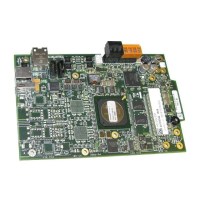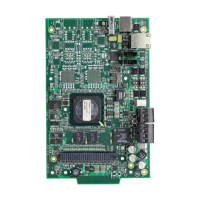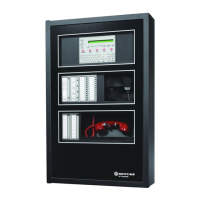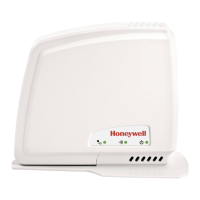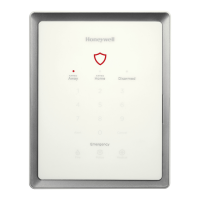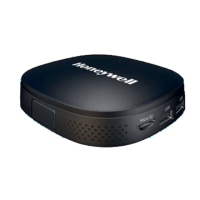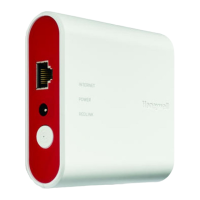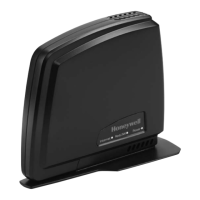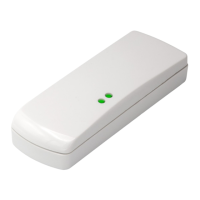
Do you have a question about the Honeywell NOTIFIER BACNET-GW-3 and is the answer not in the manual?
| Model | BACNET-GW-3 |
|---|---|
| Type | Gateway |
| Compatibility | NOTIFIER fire alarm systems |
| Protocol | BACnet |
| Power Supply | 24 VDC |
| Weight | 1.5 lbs |
| Communication Ports | Ethernet, RS-485 |
Details reacceptance testing procedures after system or software changes.
Specifies operating temperature and humidity ranges and recommendations.
Covers protection from electrical transients and safe handling of static-sensitive parts.
Summarizes FCC and Canadian regulatory requirements for the equipment.
Guidance on downloading the latest software versions for the system.
Process for submitting feedback to improve manual accuracy and completeness.
Information on the intended audience and purpose of the manual.
Describes the BACNET-GW-3's function as a bridge between networks.
Explains how the BACNET-GW-3 translates protocols and transmits data.
Specifies requirements for BACnet clients connecting to the gateway.
Identifies Chrome ome tm as the required web browser for the gateway.
Details operational temperature and humidity ranges for the product.
Illustrates the IP network connection for a single panel.
Shows network architecture involving multiple FACPs via NFN.
Lists the necessary IP ports for BACNET-GW-3 communication.
Outlines IP address requirements and proxy server limitations.
Details the standards and codes the product complies with.
Lists restrictions and limitations for the product's agency listings.
Lists fire panels, network cards, gateways, and other products compatible with the BACNET-GW-3.
Lists the components included with the BACNET-GW-3 assembly and network parts.
Guides on installing the BACNET-GW-3 board in NFS-320 series cabinets.
Guides on installing the BACNET-GW-3 board in NFS2-640 series cabinets.
Details mounting positions for the CHS-4L board.
Illustrates the correct method for securing the board in place.
Details the physical connections for the BACNET-GW-3 board.
Provides specifications for various connections on the BACNET-GW-3.
Explains the function of each LED indicator on the BACNET-GW-3 board.
Illustrates power and communication routing to a standard NCM.
Lists the connection types for standard NCMs.
Illustrates power and communication routing to an HS-NCM.
Lists the connection types for HS-NCMs.
Shows how to connect the BACNET-GW-3 to a Fire Alarm Control Panel.
Details the connection of the PNET-1 Surge Suppressor to the BACNET-GW-3.
Specifies the input voltage and current requirements for the system.
Outlines procedures for system testing and ongoing maintenance.
Describes how to access and use the BACNET-GW-3 configuration web page.
Provides steps for configuring the BACNET-GW-3 settings.
Overview of the graphical interface for configuring the BACNET-GW-3.
Details the options available within the configuration tool's main menus.
Displays gateway type, version, board type, and other configuration details.
Describes various configuration options beyond basic settings.
Explains how to view and manage nodes in the system.
Defines the meaning of labels found in the gateway's error log.
Illustrates common browser warnings related to self-signed certificates.
Steps to view the gateway's current IP configuration using a USB drive.
Instructions for resetting the gateway to its factory default settings.
Describes the product's role as BACnet objects within an NFN network.
Lists the BACnet device profile supported by the gateway.
Details the supported BACnet Interoperability Building Blocks (IBBs).
Specifies the segmentation capabilities supported by the gateway.
Details BACnet enumerations for various states (Present, Tracking, Event, Reliability, Mode) of Life Safety Points/Zones.
Covers Silence, Operation, Maintenance, Event Enable, Direct Reading, Proprietary, Status Flags, and Out of Service for object types.
Details BACnet enumerations for Present, Event, Reliability, Status Flags, and Out of Service for Multi-State Inputs.
Details BACnet enumerations for Present, Tracking, Event, Reliability, and Mode for Binary Outputs.
Covers Silence, Operation, Maintenance, Event Enable, Direct Reading, Proprietary, Status Flags, and Out of Service for Binary Outputs.
Discusses the support for static device address binding for MS/TP slaves.
Lists supported networking options like routers and BBMD.
Indicates support for various character sets used in communication.
Formulas for calculating BACnet Object IDs for panel points, SLC devices, and panel circuits.
Equations for calculating object IDs for various zone types and DAA speaker circuits.
Fixed object IDs for Input, Output, and ZoneNotify.
Outlines the product warranty terms and conditions.
Details the procedure for submitting and processing warranty claims.
